Broccoli Microgreens: Benefits and How to Grow
Broccoli Microgreens are a superfood that you can grow right in your own kitchen. They are full of health benefits and taste great too. Learn everything you need to know about growing and eating broccoli microgreens in this helpful guide.
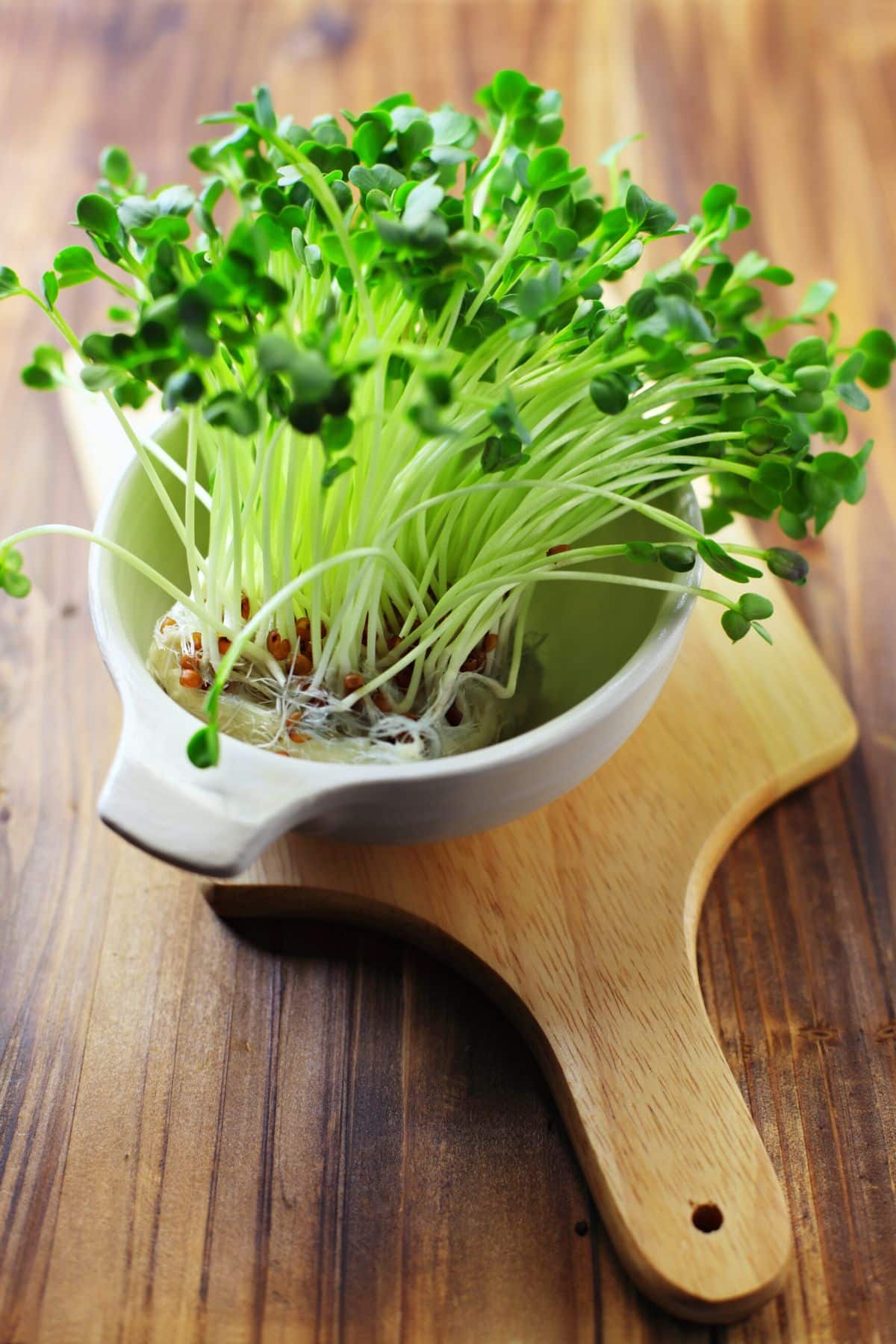
What are Broccoli Microgreens?
Broccoli sprouts vs. broccoli microgreens
Not to be confused with broccoli sprouts, broccoli microgreens are miniature broccoli plants harvested within a week or two of planting.
Whereas broccoli sprouts have only very tiny leaves and white stems, broccoli microgreens are complete plants. They have roots, stems, and two cotyledon leaves.
Harvested when they are just 2 to 3 inches tall, these power-packed little greens are full of flavor and nutrients.
Why should you eat baby broccoli plants?
In some ways, broccoli microgreens are almost too good to be true! They are as good for you as mature broccoli, but because they are so small you only need to eat a small quantity to reap the benefits.
Better still, they are easy to grow and ready to harvest incredibly quickly. So if you are looking for an endless supply of one of the most nutritious food sources around, growing your own broccoli microgreens is the way to go.
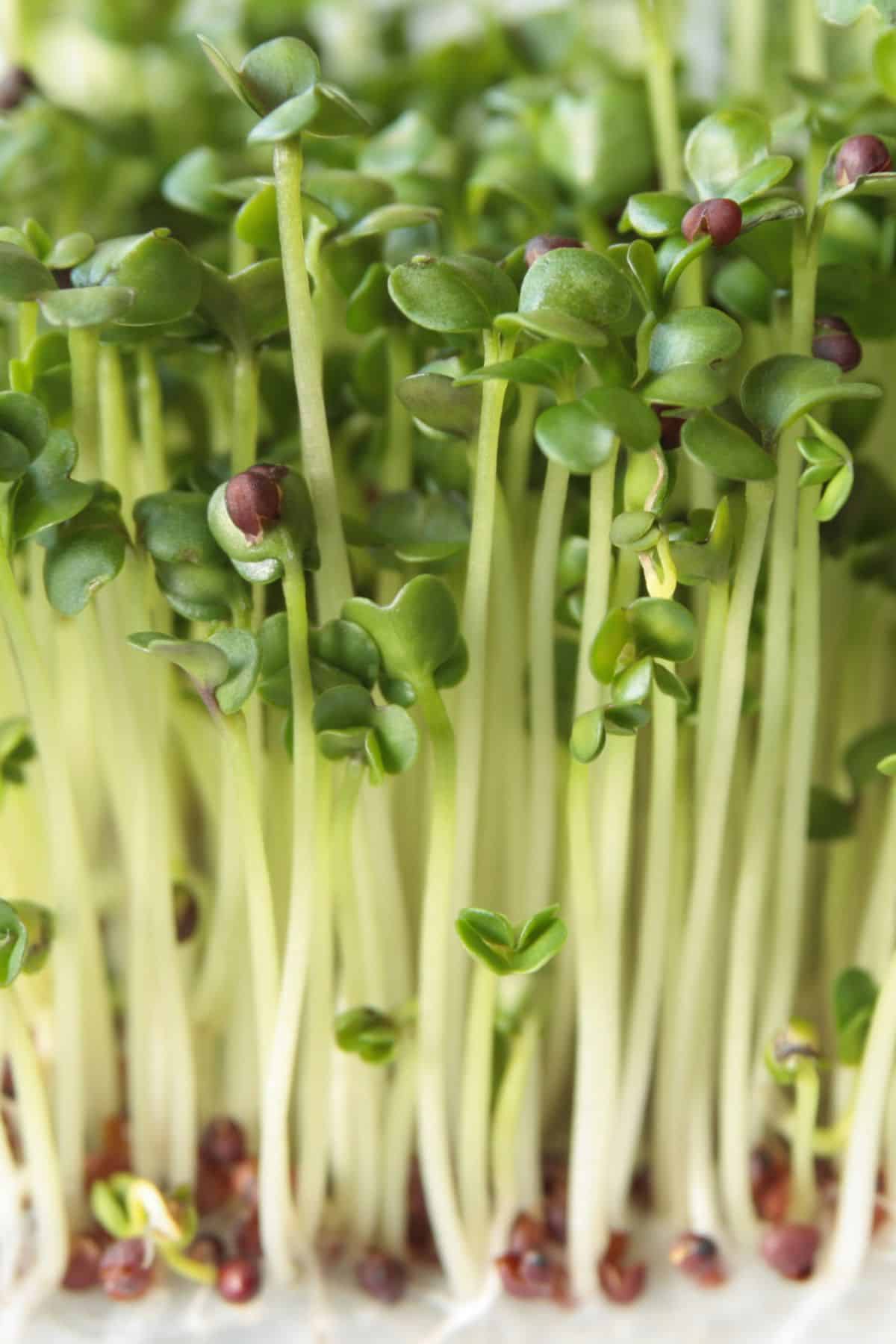
Health benefits
High nutrition
Many experts consider broccoli microgreens to have superfood status because they are so very rich in nutrients.
Recent research has demonstrated that they can be even more nutritious than mature broccoli – not to mention the fact that their production involves a much smaller ecological footprint. In other words, the sprouts can have higher amounts of phytonutrients than their mature counterparts.
Broccoli microgreens contain a dazzling array of minerals and essential nutrients, including magnesium, potassium, fiber, calcium, and iron, along with vitamin A, vitamin B, vitamin C, vitamin E, and vitamin K.
Sulforaphane content
They are also a rich source of a phytochemical called sulforaphane. This is a nutrient found in other cruciferous veggies like cabbage and cauliflower.
Studies are showing the value of sulforaphane in preventing and treating chronic diseases, including several types of cancer. Helping to reduce inflammation, fight cancer cells by reducing free radicals, and boosting your immune system, sulforaphane can also give your digestive health a boost.
Consuming the amount of cruciferous vegetables necessary to gain these benefits can be challenging for some people.
Taste benefits
Indeed, many – especially children – find the taste of crucifers to be overpowering. Consuming broccoli microgreens provides a great alternative because the taste is far milder and they can easily be mixed with other foods.
Broccoli microgreens are also on my list of the best foods to cleanse the liver.
The health benefits of broccoli microgreens makes them worth a try! But, skip the ones you buy in grocery stores as they are expensive and may be lower in nutritional value.
Use this step-by-step guide to learn how to make your own at home for pennies on the dollar.
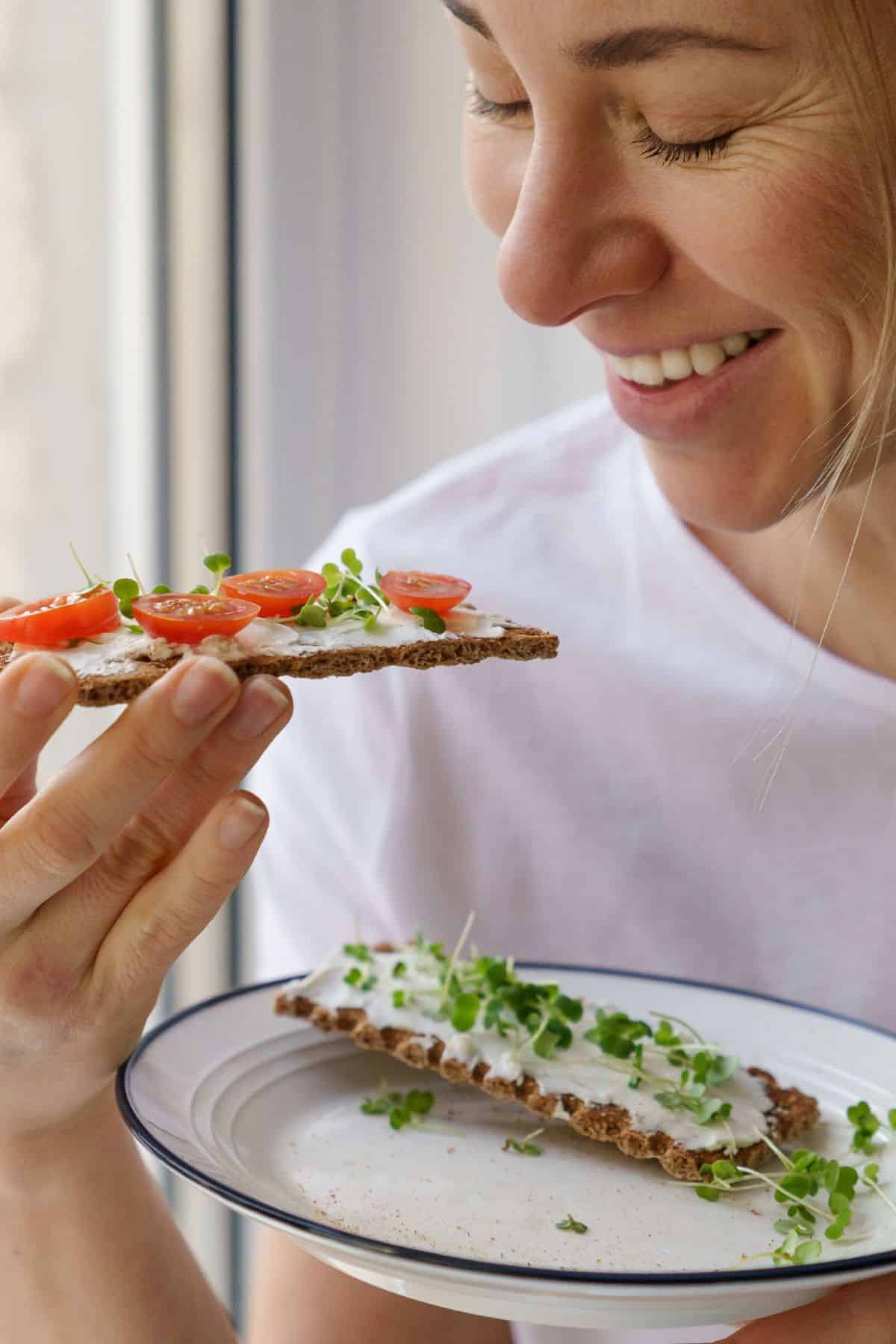
How to Grow Broccoli Microgreens (Complete Guide)
If you’re imagining that you will need an elaborate set-up in order to produce a regular supply of healthy broccoli microgreens, then I have good news for you.
All you’ll need to grow broccoli microgreens are the seeds, a few basic supplies, water, and plenty of light.
Depending on the amount you want to grow, you don’t even need much space. It’s quite possible to grow an adequate supply on a sunny windowsill.
The best news of all is that broccoli microgreens are the easiest microgreens to grow. If you are just getting started with growing microgreens at home, they are the perfect crop to choose.
Supplies you’ll need
Here’s a look at everything you will need to start growing your own supply of broccoli microgreens.
Broccoli seeds
Although you can use regular broccoli seeds to grow microgreens, you’ll often get the best results with those sold specifically as microgreen seeds. This is because they are more likely to germinate quickly, yielding a crop within one to two weeks.
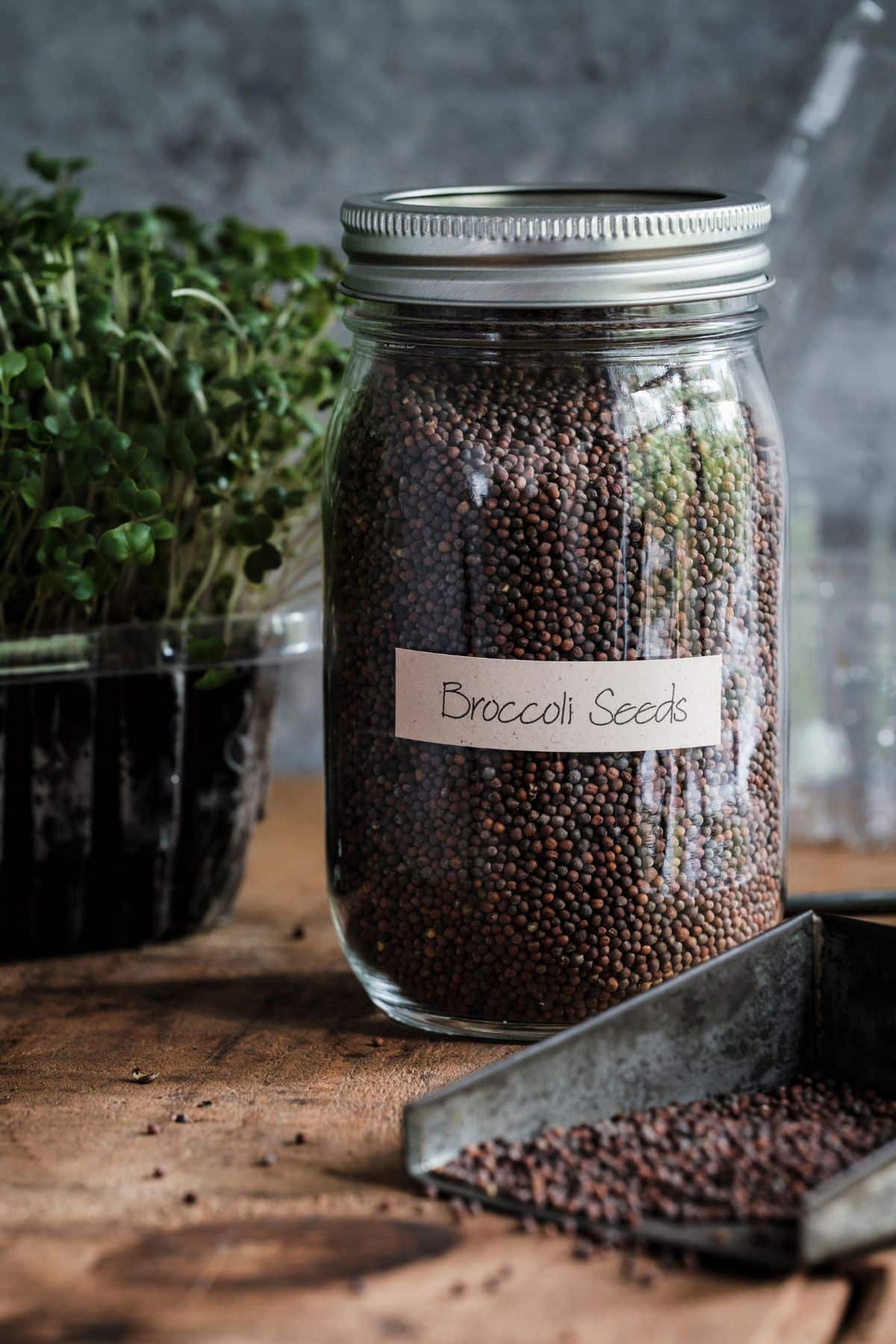
Growing medium
You have a few choices for your microgreens growing medium.
A thin layer of soil is the most popular option. Seed soil is ideal, as it is fine-grained and lightweight. This means it won’t weigh down the seeds and it will be easier for the roots to become established.
You could use potting soil instead, although this is heavier and the seeds will have to work a little harder to emerge through the surface.
Alternatively, you could use grow mats or paper towels. You could also try coconut coir, although this tends to dry out quickly and needs careful watering.
Containers
To make it easy to harvest your broccoli microgreens, you’ll need shallow trays (1 to 2 inches deep).
If you’re just testing the waters, you could use the eco-friendly option of recycled fruit containers or pie plates. However, these will likely become too small should you decide to grow broccoli microgreens on a regular basis.
The tray in which you plan to grow the microgreens will need holes for drainage. This will prevent the growing medium from becoming waterlogged, which – in turn – could lead to mold and rot.
You will also need a second tray, larger than the growing tray. You will place this beneath the growing tray and use it for watering the seeds.
Watering seeds from the bottom keeps their leaves and stems dry – another good way to prevent mold.
You can also buy a set of microgreens growing trays.
Spray bottle
You’ll need this for watering the seeds immediately after you’ve sown (planted) them.
Light source
A good supply of light is essential for growing broccoli microgreens. It is needed for the process of photosynthesis that turns them green.
Although you can rely on natural sunlight, you might find it easier to invest in a grow light instead. This gives you full control over just how much light the plants get and ensures that they all receive exactly the same amount at all times.
How to sow or plant your broccoli microgreen seeds
First, place your growing medium inside your container until it just comes up to the rim. Using your hand, ensure the surface is level and pat it down very gently. (Do not pat it down if you’re using coconut coir, as it can become too compact).
Gently spray the soil with water from your bottle and allow it to soak in. Then lightly spray the surface again.
It’s now time to sow your seeds. Unlike other microgreens, broccoli seeds don’t need soaking to soften the seed hull. They are so tiny that they break open easily.
Carefully spread them in an even layer over the surface, covering as much as possible so that the growth will be dense. Be sure, however, that the seeds are in a single layer – piling them up will limit the airflow and they may start to rot.
How to germinate the seeds
Don’t cover the seeds with soil – simply give them a light misting with the spray bottle. Take care here, as they are so small they can be accidentally blown around!
To encourage germination, you need to keep the seeds moist. To do this, cover the tray in order to retain humidity and block out the light. You can use the second, larger tray to cover the growing tray.
Don’t be tempted to add weight, which can be helpful in germinating microgreens like kale and radish. Broccoli microgreens don’t need it.
Leave the seeds to germinate in a warm spot for 2 days.
At this point, take a look under the cover to see if they have sprouted. They are ready for the next step when almost all of the seeds have leaves.
If they are not at this stage yet, mist them with water again and replace the cover. Leave them to germinate for up to 2 days longer.
Expose the broccoli microgreens to light and watch them grow!
Once most of the seeds have sprouted, take off the cover and expose them to as much natural light as possible.
If you opt to use a grow light, they will need to be underneath it for between 4 and 8 hours every day.
Place the growing tray on top of the second, larger tray and water the seeds well. The soil will absorb the water via the drainage holes in the growing tray. Once the soil is moist, remove the second tray to avoid overwatering the seeds. Too much water may cause them to rot.
From now on, you will be watering the seeds using the bottom tray. You’ll need to do this as often as it takes to keep the soil consistently moist.
Note: In the early stages, it might look as if the seeds are covered in fuzzy white mold. However, these white fibers are actually root hairs – just what you want to see! You shouldn’t have any issues with mold as long as you stick to watering the seeds from the bottom.
Within several days the seeds will begin to grow into microgreens.
They will look pale in color initially, but once they have received enough light they will start to turn green.
If they continue to look pale even as they grow taller, they may not be receiving enough light. It’s important to rectify this – using a grow light if necessary – as pale microgreens will be inferior in taste and less nutritious than those that are fully green.
Aim to keep your growing microgreens in a warm area – around 70℉ is ideal. They also require good ventilation and a humidity level of around 50%. You can always buy a warming mat if you need extra help keeping the microgreens warm.
Harvesting your broccoli microgreens
Now comes the exciting part – it’s time to harvest your nutritious microgreens!
Your baby broccoli plants are ready once they are 2 to 3 inches tall, with a vibrant green color and two cotyledon leaves.
This will be between 7 and 14 days after sowing, before the true leaves form. Allowing the true leaves to develop will have an adverse effect on the flavor of your greens.
Stop watering the microgreens 12 hours before harvesting to make sure they are dry. This makes it easier to store them afterward. Using a sharp pair of scissors or a sharp knife, snip off the microgreens in bunches just above the surface of the soil.
You can harvest the entire batch in one go or cut what you need. But it’s important to make sure the entire crop is harvested before it gets too old.
Sadly, the microgreens won’t regrow after harvesting so you will need to sow more seeds for a second batch.
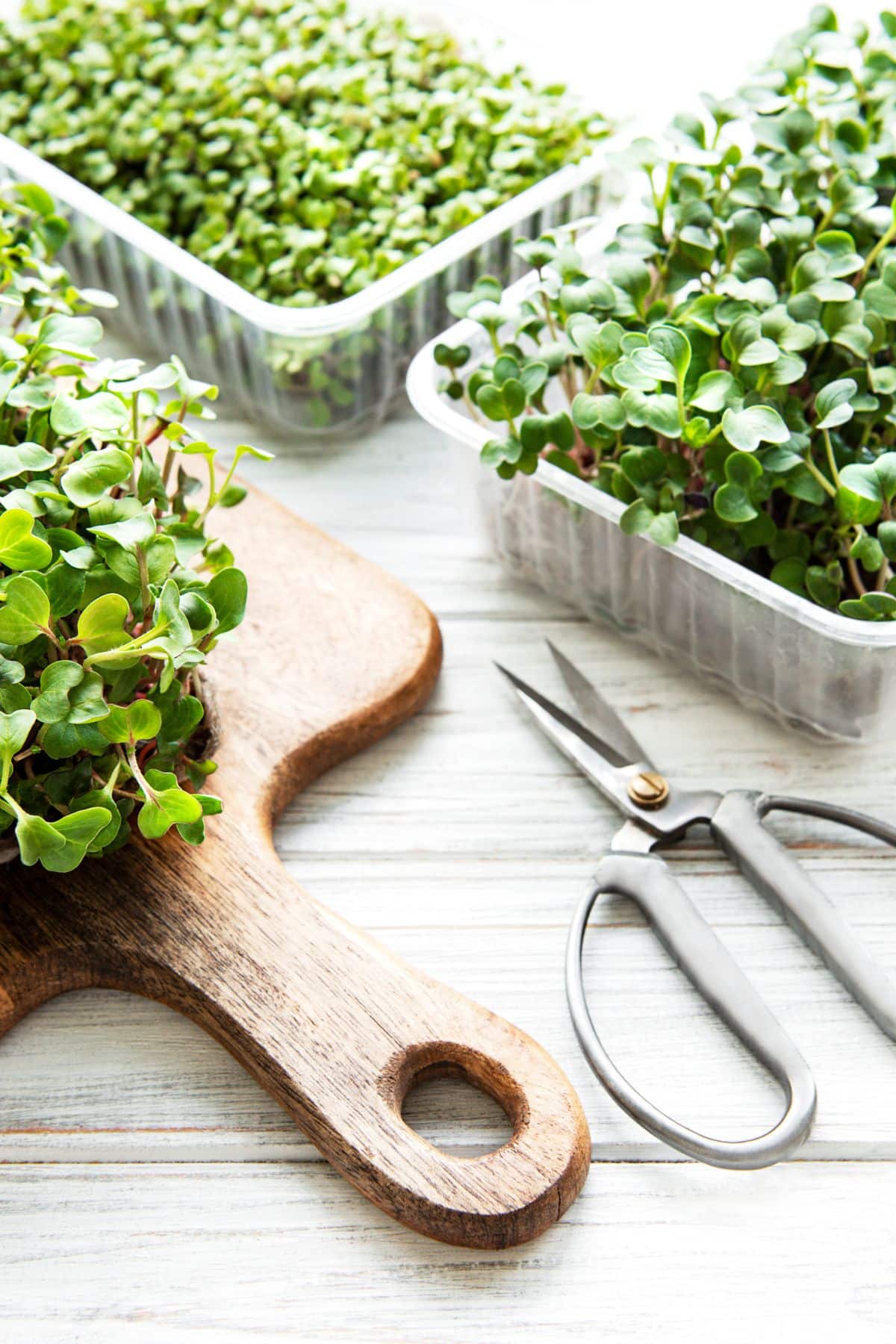
Storing your broccoli microgreens
If you have harvested more broccoli microgreens than you can use in one go, you will need to store them in the fridge.
First, wrap them in a paper towel to absorb any moisture. This will help them last longer. Then place them in an airtight container or plastic bag and keep refrigerated for up to 4 days.
Steps for Growing Broccoli Microgreens
Step One
Place your growing medium into a suitable container. You can use seed soil, potting soil, growing mats, paper towels, or coconut coir.
Step Two
Spray your growing medium lightly with water and allow it to sink in. Respray the surface once again.
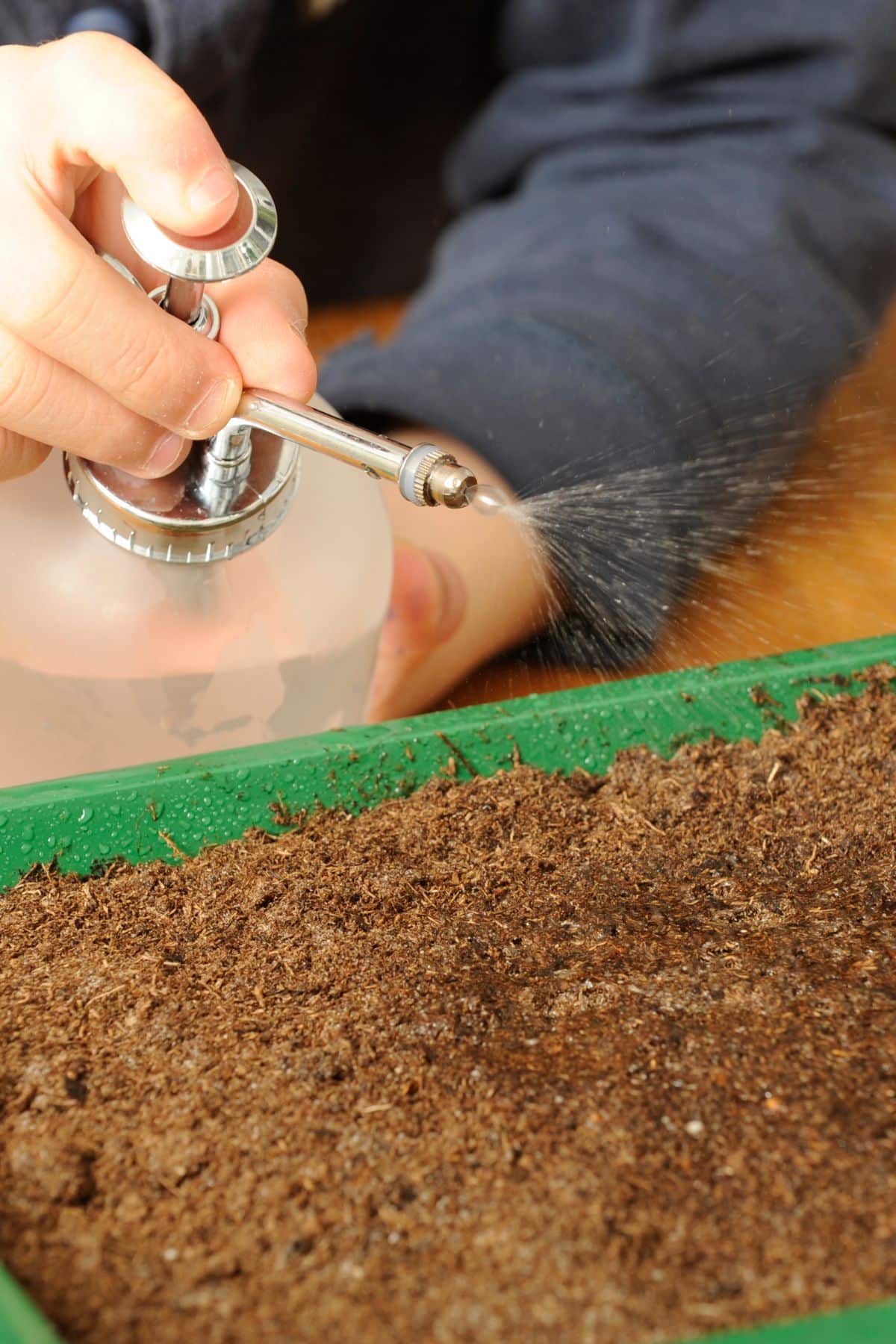
Step Three
Sprinkle your broccoli seeds over the surface, ensuring they are fairly dense but in a single layer.
Step Four
Gently mist the seeds with a spray bottle, then cover them to retain moisture and block out the light.
Leave to germinate until all the seeds have sprouted.
Step Five
Remove the cover and expose the seeds to plenty of natural light, or use a grow lamp. Water regularly.
Step Six
Harvest within 7 to 14 days of planting.

Broccoli Microgreen FAQs
Broccoli microgreens grow very quickly and are ready within 7 to 14 days after sowing. This is because they are harvested within the very early stages of growth, shortly after germination.
The great thing about broccoli microgreens is that they are relatively mild in taste compared to fully grown broccoli. This makes it easy to use them in a variety of ways. They are best consumed raw to take advantage of the nutrients, but you can also add them to cooked foods like in a stir-fry. They will still be highly nutritious even if gently cooked.
Here are some ideas (see my article on how to eat broccoli sprouts if you want more ideas):
Broccoli microgreens have a crunchy texture, so add them to dishes like salads and sandwiches, where you’d like some extra texture.
Use them as a garnish for scrambled eggs, omelets, and more.
Throw a handful into your daily smoothie.
Use them to add nutrients to soups, stir-fries, and stews. Only add them within the last few minutes of cooking to preserve their nutrients.
Broccoli microgreens and broccoli sprouts both offer significant health benefits, but differ in their nutrient profiles. Microgreens, harvested a bit later that sprouts, are rich in a variety of vitamins such as A, C, E, and K, while sprouts, harvested earlier, are particularly high in sulforaphane, a compound noted for its potential anti-cancer properties.
Both are excellent choices for a nutritious diet, with sprouts having an edge in sulforaphane content and microgreens offering a broader range of nutrients.
Microgreen Growing Tips
- Use non-GMO broccoli seeds, ideally those sold specifically for growing microgreens.
- For ease of harvesting, make sure your growing container is no more than 1 to 2 inches deep.
- Instead of soil you can use grow mats, coconut coir, or paper towels.
- After germination, always water your seeds from the bottom using a second tray beneath your growing tray.
- Ensure your broccoli microgreens receive plenty of natural light as they grow, preferably on a sunny windowsill. If you use a grow lamp, place them under it for at least 4 to 8 hours daily.
- For best results, try to maintain a room temperature of around 70℉ (21℃), with 50% humidity and adequate ventilation.
- Ensure you harvest all your microgreens once they are 2 to 3 inches tall and have two cotyledon leaves.
- Store unused microgreens in the refrigerator for up to 4 days in a plastic bag or airtight container.
Don’t Miss These Microgreen Resources
I hope you make this recipe! If you do, please leave a comment and a starred review below.
And, consider following me on social media so we can stay connected. I’m on Facebook, Pinterest, Instagram, and YouTube!
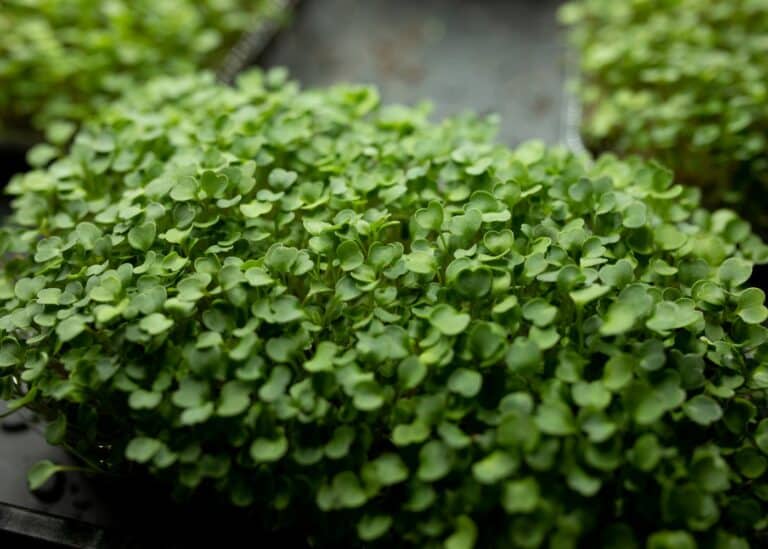
How to Grow Broccoli Microgreens
Broccoli Microgreens are a superfood that you can grow right in your own kitchen. They are full of health benefits and taste great too. Learn everything you need to know about broccoli microgreens.
- Total Time: 7 days 30 minutes
- Yield: 4 Servings 1x
Instructions
- Place the soil into the growing container until it reaches the rim. Pat gently to level it out.
- Spray the soil with water. Wait until it is absorbed, then spray again.
- Sprinkle the broccoli seeds evenly over the surface of the soil in a single, dense layer.
- Mist the seeds with water, then cover. Leave to germinate for 2 to 4 days, until all the seeds have sprouted.
- Remove the cover and expose the seeds to plenty of natural sunlight.
- Water the growing microgreens from the bottom as often as necessary to keep the soil consistently moist.
- Harvest the microgreens when they are a rich green color and 2 to 3 inches tall, between 7 to 14 days after sowing.
Notes
- Use non-GMO broccoli seeds, ideally those sold specifically for growing microgreens.
- For ease of harvesting, make sure your growing container is no more than 1 to 2 inches deep.
- Instead of soil you can use grow mats, coconut coir, or paper towels.
- After germination, always water your seeds from the bottom using a second tray beneath your growing tray.
- Ensure your broccoli microgreens receive plenty of natural light as they grow, preferably on a sunny windowsill. If you use a grow lamp, place them under it for at least 4 to 8 hours daily.
- For best results, try to maintain a room temperature of around 70℉ (21℃), with 50% humidity and adequate ventilation.
- Ensure you harvest all your microgreens once they are 2 to 3 inches tall and have two cotyledon leaves.
- Store unused microgreens in the refrigerator for up to 4 days in a plastic bag or airtight container.
- Prep Time: 30 minutes
- Cook Time: 7 days
- Category: Gardening
- Method: Home gardening
- Cuisine: Healthy
- Diet: Vegan
Nutrition
- Serving Size: 1 tablespoon
- Calories: 1
- Sugar:
- Sodium:
- Fat:
- Saturated Fat:
- Trans Fat:
- Carbohydrates: 0.1 g
- Fiber: 0.1 g
- Protein: 0.1 g
- Cholesterol:
Don’t forget to join my newsletter list to get exclusive clean eating recipes and tips. The newsletter is 100% free with no spam; unsubscribe anytime.
About the Author: Carrie Forrest has a master’s degree in public health with a specialty in nutrition and is a certified holistic nutritionist. She is a top wellness and food blogger with over 5 million annual visitors to her site. Carrie has an incredible story of recovery from chronic illness and is passionate about helping other women transform their health. Send her a message through her contact form.
Note: this post is for informational purposes only and is not intended as medical advice. Please consult your healthcare provider for recommendations related to your individual situation.



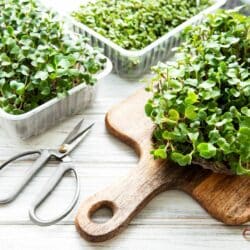
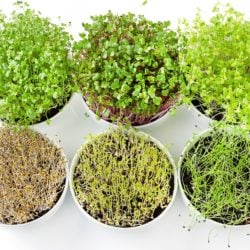
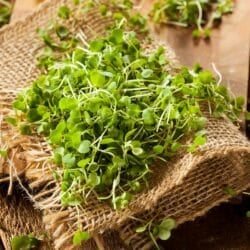
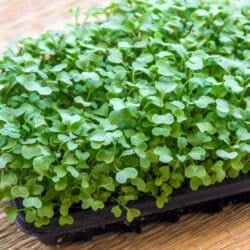














So much cheaper than buying them at the store. Easy too!